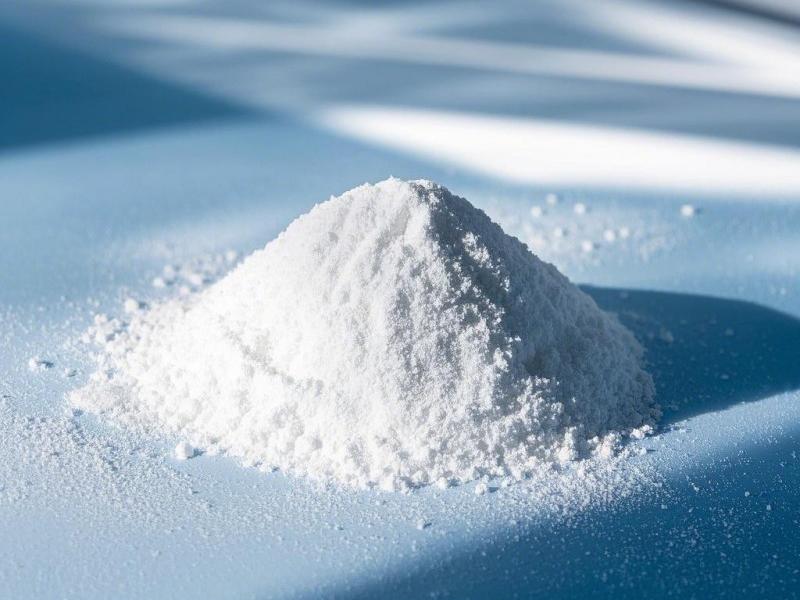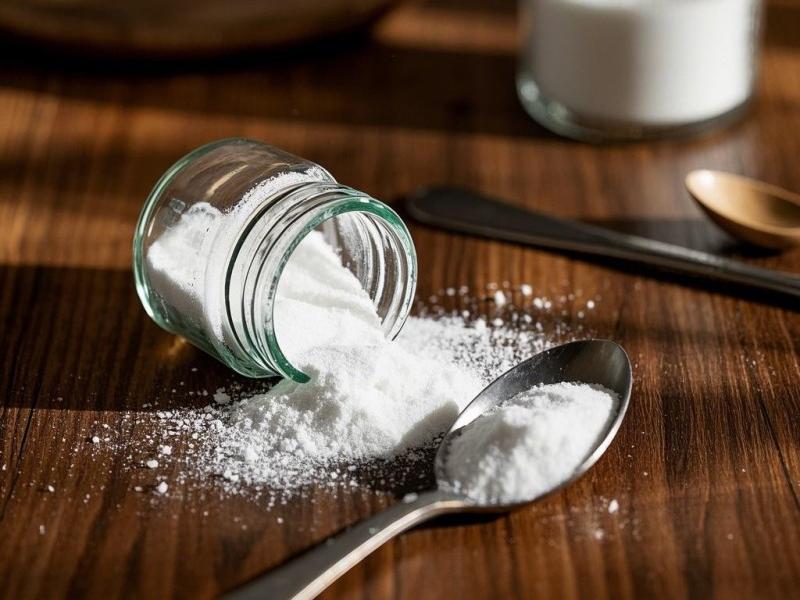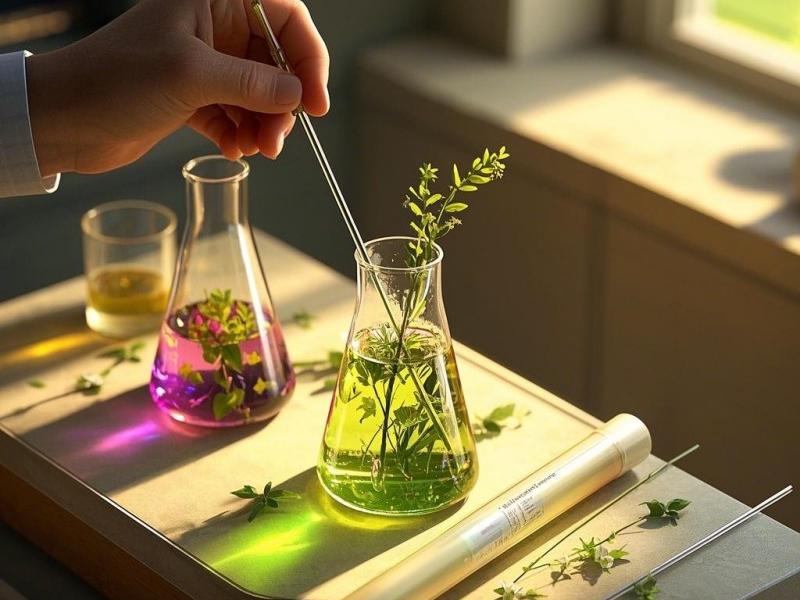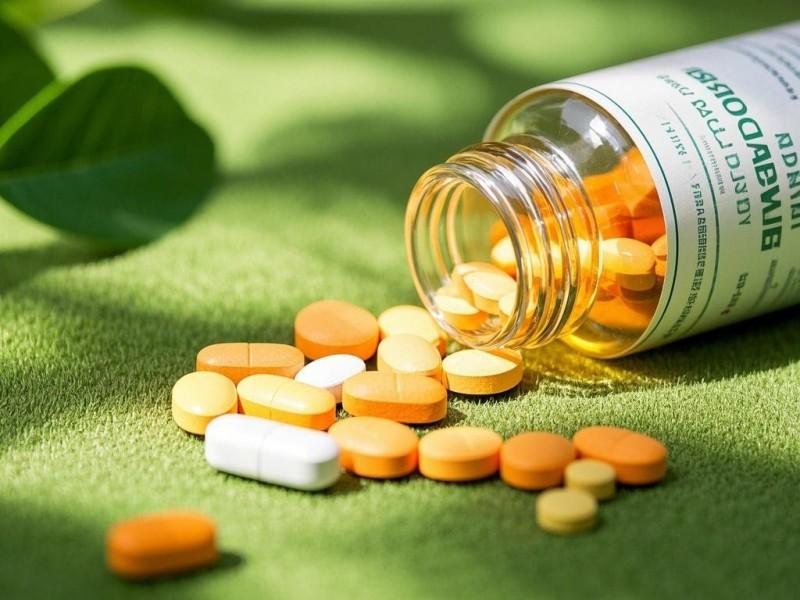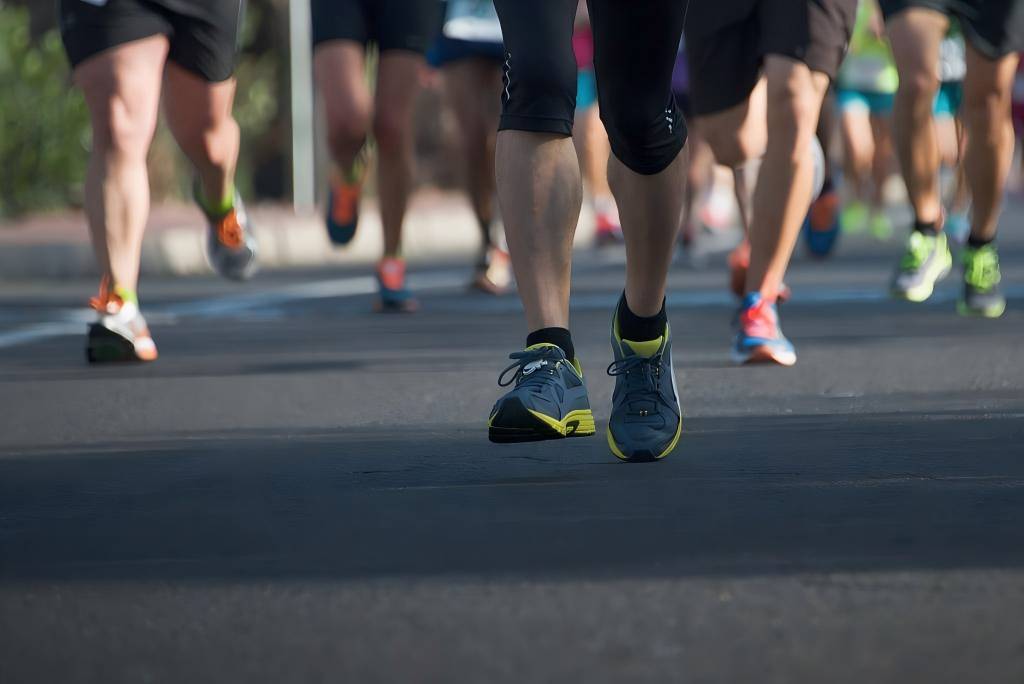What Is the Production Method of Octacosanol Powder?
The chemical name of octacosanol is 1-octacosanol, commonly known as polyglycol or montanol. It is a higher aliphatic alcohol with a white solid structure that is insoluble in water but soluble in organic solvents such as ether, chloroform, and petroleum ether. It is widely found in nature[1-2] and is contained in the epidermis of the leaves, stems, and fruits of many plants. Octacosanol is mainly found in natural products such as rice bran wax, insect white wax, wheat germ oil, beeswax, and cane wax[3], and mainly exists in the form of a carboxylate. In order to develop and utilize the resources of octacosanol, researchers have conducted in-depth research and reported on its properties. For example, octacosanol has physiological activities such as anti-fatigue [4-6], improving exercise capacity [7], anti-oxidation [8], enhancing endurance, energy and physical strength, and improving myocardial function [9-11]. In addition, in terms of medicine, octacosanol also has a wide range of biological activities, such as lowering cholesterol [12-13], lowering blood lipids [14-16], relieving Alzheimer's disease [17-18], promoting hair growth [19], preventing atherosclerosis [20-21], protecting the liver [22], anti-inflammatory [23], protects against cerebral ischemia [24], relieves diarrhea [25], prevents myocardial necrosis [26], and has anti-tumor [27] properties. Meanwhile, octacosanol also has good safety [28-29]. Therefore, octacosanol has been widely used in functional foods [30-32], health products [33-34], cosmetics [35], feed [36-37], and the pharmaceutical industry.
Currently, there are many related products containing octacosanol on the market, such as red yeast rice, sucrose, black seed, flaxseed, policosanol, arginine octacosanol capsules, and octacosanol oil capsules. In order to scientifically utilize octacosanol resources, the development and utilization of functional foods, health products, cosmetics, and especially the pharmaceutical field is the direction and trend that will promote the development of this industry. Among them, a stable supply of raw materials is the foundation that will ensure the development of the industry. In order to help the development of the high-level alkanol industry and ensure the supply of raw materials, this article provides a comprehensive overview of the preparation methods or ways to obtain octacosanol.
1 Extraction and separation from natural products
1.1 Saponification extraction
Octacosanol is mainly found in natural waxes such as rice bran wax, beeswax, sugar cane wax, and carnauba wax. When natural waxes are used as raw materials to extract octacosanol, the saponification extraction method is usually used. The process generally involves three steps: saponification, extraction or desaponification, and separation. For saponification, a slightly excessive amount of sodium hydroxide or potassium hydroxide is generally used as the base, with ethanol or water as the solvent and a temperature of 80–100°C. For the extraction step, organic solvents with low polarity are generally used, such as petroleum ether, hexane, benzene, and gasoline. The desaponification technique is as follows: a saturated CaCl2 solution or CaCl2-ethanol solution is added to the saponification mixture, heated thoroughly, and filtered to remove the acid. Separation technology is a key step in obtaining high-purity higher alkanols. The main methods are recrystallization, column chromatography, vacuum distillation, and molecular distillation. The general method for testing octacosanol is gas chromatography (GC) or gas chromatography-mass spectrometry (GC-MS). Extensive research has been carried out on the extraction of octacosanol from natural waxes. The main research results are shown in Table 1.
1.2 Supercritical CO2 extraction
Because supercritical CO2 extraction has the advantages of combining extraction and separation, high efficiency, low energy consumption, no solvent residue, and good safety, when extracting higher alkanols from natural waxes, in addition to the above preparation methods, supercritical CO2 extraction is also widely used to extract and prepare octacosanol. For example, You Pengcheng et al. [48] used bagasse as a raw material, after saponification, supercritical CO2 extraction was used, with an extraction rate of 8. 24% and 24. 80% octacosanol in the extract. Yang Huqing et al. [49] used sugarcane bagasse as the raw material and used the same method, with an extraction rate of 6.42% and 53.14% octacosanol in the extract.
1.3 Reduction extraction
Based on the principle of saponification extraction, the extraction rate of the active target substance octacosanol is not high and the acid part of the resource is not fully utilized. Because esters can be reduced to alcohols under the action of strong reducing agents, both the ester and acid parts can be reduced to alcohols. Therefore, the reduction of natural waxes to prepare high-grade alkanols is one way to solve this problem. Ma Li et al. [50] carried out research on the preparation of high-grade alkanols by reducing beewax using tetrahydroalumane (LiAlH4) as a reducing agent, tetrahydrofuran (THF) as a solvent, and a temperature of 65 °C. The results showed that after 5 h of reaction, the conversion rate of high-grade alkanols reached 95% to 98%, and the yield of octacosanol was 32%. The general formula for the reduction of esters is shown in Figure 1.
2 Chemical synthesis
Due to the limited natural resources, chemical synthesis is an effective way to obtain high-purity and high-value octacosanol powder. There are currently three main strategies for the synthesis of octacosanol, namely, adding a decanoyl chain to an octadecanoyl chain, adding a dodecanoyl chain to a hexadecanoyl chain, and adding a docosanoyl chain to a hexanoyl chain.
2.1 Synthesis of a decanoyl chain plus an octadecanoyl chain
2.1.1 Preparation using 1,10-decanediol as a raw material
The main process of the first method (using the synthesis method of Zhang Hongkui [51] as an example) is to use 1,10-decanediol as the starting raw material, and react with hydrobromic acid to obtain the intermediate 10-bromo-1-decanol (1) and reacted with 3,4-dihydro-2H-pyran to obtain intermediate 2-((10-bromodecyl)oxy)tetrahydro-2H-pyran (2). This intermediate was reacted with magnesium powder in tetrahydrofuran (THF) solvent with 1,2-dibromoethane as initiator to the intermediate (10-((tetrahydro-2H-pyran-2-yl)oxy)decyl)magnesium bromide (3) was obtained. On the other hand, octadecyl alcohol was used as a raw material, and by reacting with p-toluenesulfonic acid (TsOH), the intermediate 4-methylbenzenesulfonic acid octadecyl ester (4) was obtained. With cuprous iodide (CuI) as the catalyst, t = -78~5°C, the coupling reaction of the intermediate (10-((tetrahydro-2H-pyran-2-yl)oxy)decyl)magnesium bromide (3) and the intermediate 4-methylbenzenesulfonate octadecyl ester (4) was carried out to obtain the intermediate 2-(octacosyloxy)tetrahydro-2H-pyran (5), and finally, in a TsOH-MeOH system, to protect and obtain the target octacosanol (6) with a total yield of 61.4%. The synthetic route is shown in Figure 2.
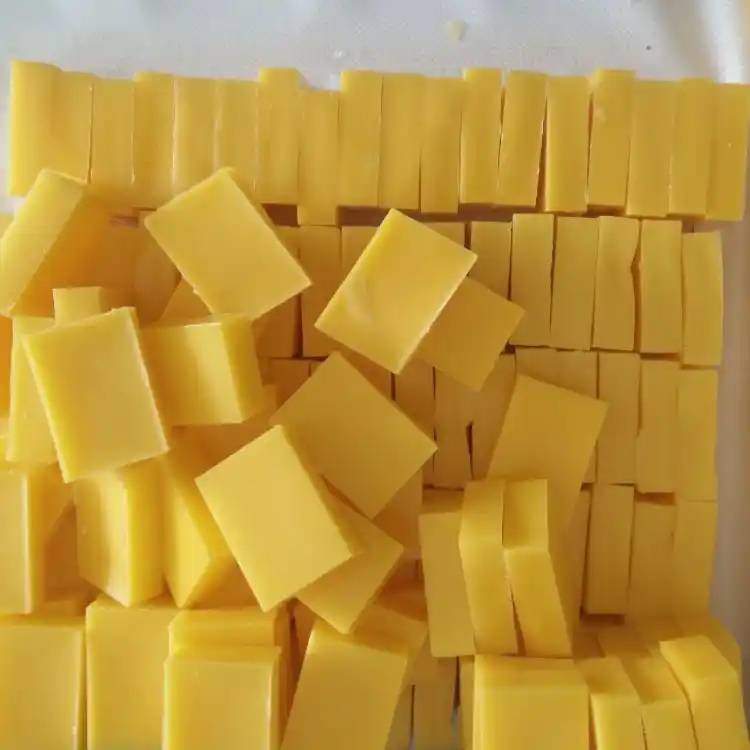
At present, there are many similar research reports on the synthesis of octacosanol [52-56], but there are also differences in specific links. For example, Li Weili et al. [52] used 1-bromooctadecane as the carbon-18 raw material, and at the same time, before coupling, the intermediate 2-((10-bromodecyl)oxy)tetrahydro-2H-pyran (2) was first converted to 2-((10-iododecyl)oxy)tetrahydro-2H-pyran by reacting with NaI. In the hydroxyl protection, Maeda et al. [54] used a pivalate as a protecting agent.
In the second step of hydroxyl protection, Sarakinos et al. [55] used 3,4-dihydro-2H-pyran, tert-butyldimethylchlorosilane and benzyl bromide as protecting reagents, respectively. In the coupling reaction, THF was used as the solvent, Li2CuCl4 was used as the catalyst, and the temperature was between -20 and 0 °C. The three hydroxyl-protected intermediates reacted with octadecylmagnesium chloride to give the condensation products. In the deprotection step, the tetrahydro-2H-pyran and tert-butyldimethylsilyl protected intermediates were both deprotected under acid conditions to give the deprotected products, and in the deprotection of benzyl protected condensates, it was successfully deprotected under Pd/C-H2 conditions. Kunkuma et al. [56] used sebacic acid as a raw material to prepare 1,10-decanediol in two steps: methylation and reduction with tetrahydroalumane. In the second step, tert-butyldimethylchlorosilane was used as a hydroxyl protective reagent. the terminal hydroxyl group was oxidized to an aldehyde before coupling, and the Wittig reaction was used for coupling. There were a total of 8 steps in the reaction, with a total yield of 81.75%.
2.1.2 Preparation using undec-10-enoic acid as a raw material
Giancarlo et al. [57-58] used undec-10-en-1-oic acid as the starting material, and methylated it with methanol to obtain the intermediate methyl undec-10-enoate (14). The compound was then oxidized with OsO4-NaIO4 to obtain the intermediate methyl 10-formyl-decanoate (15). In the preparation of the octadecyl chain unit, 1-bromooctadecane was used as a raw material to obtain the intermediate octadecyl triphenyl phosphonium bromide (12) in a toluene solvent by reacting with triphenylphosphine. In the coupling step, n-butyllithium is used as a ligating acid in THF solvent, and the intermediate octadecyl triphenyl phosphonium bromide (12) is condensed with the intermediate 10-formyl decanoic acid methyl ester (15) to give the intermediate (E)-heneicosa-10-enoyl methyl ester (16). Then, in methanol solvent, Pd/C-H2 is used as a reducing agent to to obtain the intermediate methyl octacosanoate (17). Finally, LiAlH4 was used to reduce the compound to obtain the target octacosanol. This method involves a total of 6 steps and a total yield of 90%. The synthetic route is shown in Figure 4.
2.2 Synthesis of the dodecyl chain with the hexadecyl chain
Feng Youjian et al. [59] used cyclodecanone as a raw material and secondary amine morpholine under the catalysis of p-toluenesulfonic acid to obtain the enamine intermediate (18). The enamine intermediate was reacted with hexadecanoyl chloride in a triethylamine-chloroform system to obtain the intermediate 2-tetradecylcyclotetradecane-1,3-dione (19). Intermediate 19 was opened under basic conditions of NaOH to give intermediate 13-oxo-octacosanoic acid sodium salt (20), which was then reduced with sodium borohydride to give intermediate sodium octacosanoate (21), which was acidified to give intermediate octacosanoic acid (22), which was esterified with ethanol to give intermediate octacosanoic acid ethyl ester (23), and finally reduced with LiAlH4 to obtain the target compound 6. This method contains 7 steps with a total yield of 77.7%. The synthetic route is shown in Figure 5. In the synthetic method reported by Braier et al. [60], except for the use of acetonitrile as a solvent in step 2 and methanol for esterification in step 6, the remaining synthetic techniques are basically the same as those in Feng Youjian's method.
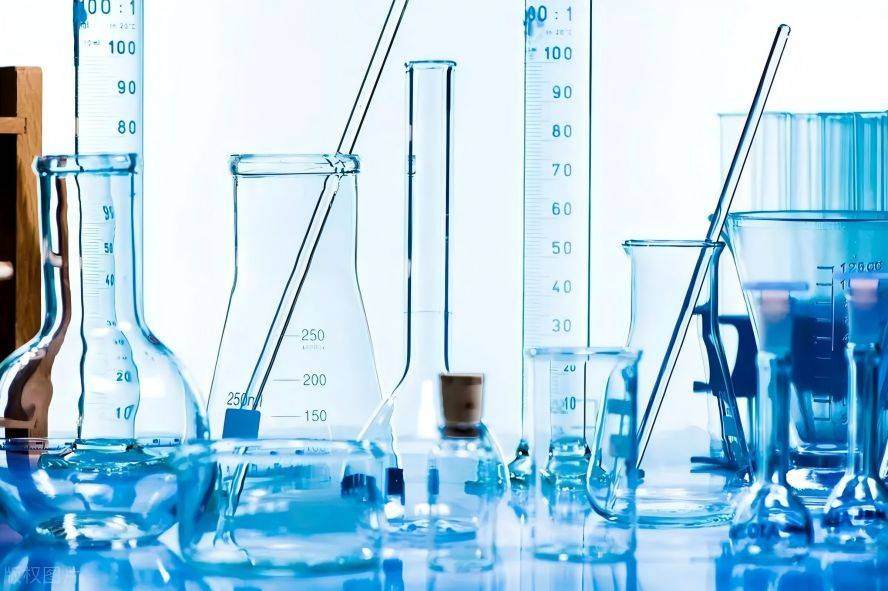
2.3 Synthesis of a docosyl chain with a hexyl chain
Li Jiangnan et al. [61] used (Z)-13-docosenoic acid (erucic acid) as the starting material, and in a dichloromethane solvent, used dichlorosulfur dioxide (SOCl2) as the chloroacylation reagent to prepare the intermediate (Z)-13-docosenoyl chloride (24) for later use. Using cyclohexanone as a raw material, 4-(cyclohex-1-en-1-yl)morpholine (25), an enamine intermediate, was obtained by condensation with morpholine in the presence of p-toluenesulfonic acid as a catalyst. The enamine intermediate is condensed with intermediate 24 in an Et3-CH2Cl2 system to give intermediate (E)-2-(docos-13-enoyl)cyclohex-1-one (26). After reaction with NaOH, intermediate 26 is acidified to give intermediate (E)-7-oxo-docos-19-enoic acid (27). intermediate 27 is reduced with Pd/C and H2 to give intermediate 7-oxotetracosanoic acid (28), intermediate 28 is reduced with alkaline reduction method of Huang Minglong to give intermediate tetracosanoic acid (22), and finally the target 6 is obtained by reduction with LiAlH4 in THF solvent.
3 Conclusion
Octacosanol has physiological activities such as enhancing physical strength and endurance, anti-fatigue, moisturizing, and anti-wrinkle, and is widely used in pharmaceuticals, health products, food, cosmetics, and other fields. Due to the special effects and limited sources of octacosanol, the added value of high-purity octacosanol is extremely high. With the increase in the global obese population and the intensifying trend of population aging in China, the demand for products that can effectively improve physical fitness and promote health is becoming more and more urgent. It is estimated that by 2030, the obese population in China will reach 329 million, and the population over 60 years old will reach 296 million. This huge consumer group provides a huge market for compounds with health-promoting functions such as octacosanol. In order to meet the growing demand for octacosanol health products in the future, the supply of raw materials for the product must be addressed.
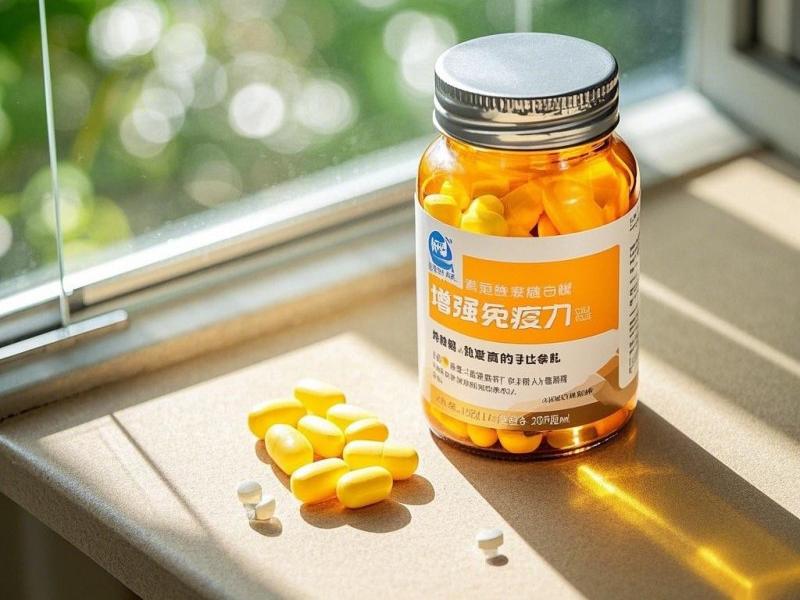
Among these, the synthesis methods of preparing high-level alkanols from natural waxes by reduction, extracting octacosanol by molecular distillation, and using erucic acid and cyclohexanone as raw materials, and then going through the transformation processes of acylation, enamination, enamine condensation, ring opening, single carbonyl reduction, acid reduction, etc., are the key technical support to solve or ensure the supply of raw materials. As people pay more and more attention to the quality of life and health, they are demanding that the state and local governments introduce incentive policies to promote the integrated development of the health industry and the fine chemical industry, and that the companies in the octacosanol industry increase investment in research and development, promote technological innovation, and improve product quality. It is hoped that the octacosanol and other higher alkanol industries will seize development opportunities, strengthen international exchanges and cooperation, deepen technological innovation, optimize product structure, and enhance product influence, so as to work with the market to jointly promote the prosperity and development of the global higher alkanol industry.
References
[1] Lei Binfu. Application and preparation of octacosanol [J]. Western Cereals, Oils and Food Science and Technology. 2003, 3: 41-44.
[2]Shen J J, Luo F J, Lin Q L. Policosanol: Extraction and biological functions[J]. Journal of Functional Foods, 2019, 57: 351-360.
[3] Li Qifan, Zhou Wu, Zhang Bin. Preparation and application of high-purity octacosanol [J]. Jiangxi Chemical Industry, 2008, 4: 5-8.
[4] Zhou YP, Cao F L, Wu Q, et al. Dietary Supplementation of Octacosanol Improves Exercise-Induced Fatigue and Its Molecular Mechanism[J]. J. Agric. Food Chem., 2021, 69:7603-7618.
[5] Chen Fang, Zhang Guanghua, Tian Ze, et al. Research on the anti-fatigue effect of octacosanol [J]. Journal of Nutrition, 2006, 28(3): 269- 270.
[6] Wang Xiaohong, Liu Jinfeng, Xu Tao, et al. Progress in the physiological functions and applications of octacosanol [J]. China Food and Nutrition, 2018, 24(9): 14-20.
[7] Yang Xiaoying, Liu Huagang, Lin Jingsong, et al. Effects of octacosanol preparations on free radical metabolism and cardiac endocrine function in rats with exercise-induced fatigue [J]. Journal of Southern Medical University, 2008, 28(4): 652-653, 657.
[8]ChoY H, FarhoudiR, Farooq M, et al. Evaluating Korean rice genotypes and landraces for octacosanol contents and antioxidant activity[J]. Natural Product Research, 2017, 31(23):2778-2782.
[9] Chen Youshuang, Li Jiayuan. Research progress on the physiological activity and application of the functional substance octacosanol [J]. Journal of Guangxi University of Technology, 2005, 16(3): 19-22.
[10]Noa M, Herrera M, Magraner J, et al. Effect of Policosanol onIsoprenaline-induced Myocardial Necrosis in Rats[J]. Journal of Pharmacy and Pharmacology, 1994, 46(4): 282-285.
[11] Guo T Y, Luo F J. Research progress on the physiological functions of octacosanol [J]. Cereals, Grains and Oilseeds, 2017, 30(3): 26-30.
[12]Dewalkar L P, Dahule S K, Masram S C. Triticum aestivum Octacosanol, a Potential Inhibitor of PCSK9 in Fat Diet-Induced Hypercholesteromia[J]. Revista Brasileira de Farmacognosia,2024, 34: 1032-1043.
[13]Dullens S PJ, Mensink R P, Bragt M C E, et al. Effects of emulsified policosanols with different chain lengths on cholesterol metabolism in heterozygous LDL receptor-deficient mice[J]. J. Lipid Res., 2008, 49: 790-796.
[14]DingY Y, FangYM, PanYX, et al. Orally administered octacosanol improves liver insulin resistance in high-fat diet-fed mice through the reconstruction of the gut microbiota structure and inhibition of the TLR4/NF-κB inflammatory pathway[J]. Food Funct., 2023,14: 769-786.
[15]Li X, Zhang X, Ma C J, et al. Modulatory effects of policosanol from insect wax on lipid metabolism in high-fat diet-fed rats[J]. Journal of Functional Foods, 2023, 110: 105824.
[16] Sharma R, Matsuzaka T, Kaushik M K, et al. Octacosanol and policosanol prevent high-fat diet-induced obesity and metabolic disorders by activating brown adipose tissue and improving liver metabolism[J]. Scientific Reports, 2019, 9: 5169.
[17]Gade S, Rajamanikyam M, VadlapudiV, et al. Acetylcholinesterase inhibitory activity of stigmasterol & hexacosanol isresponsible fo larvicidal and repellent properties of Chromolaena odorata[J]. Biochimica et Biophysica Acta. General Subjects, 2017, 1861(3):541-550.
[18]Zhang X, Ma C J, Sun L, et al. Effect of policosanol from insect wax on amyloid β-peptide-induced toxicity in a transgenic Caenorhabditis elegans model of Alzheimer’s disease[J]. BMC Complementary Medicine and Therapies, 2021, 21: 103.
[19]Wang Z D, Feng Y, Ma Li Y, et al. Hair growth promoting effect of white wax and policosanol from white wax on the mouse model of testosterone-induced hair loss[J]. Biomedicine &Pharmacotherapy, 2017, 89: 438-446.
[20]Othman RA, Xu ZY, Fitz E, et al. The Impact of Dietary Octacosanol on Plasma Lipids and Atherosclerotic Lesion Development in Apo E-KO Mice[J]. The FASEB Journal, 2007, 21(6):1087.
[21]Simonetta O B, Emanuela C G, Stefano M, et al. Regulation of HMGCoA Reductase Activity by Policosanol and Octacosadienol, a New Synthetic Analogue of Octacosanol[J]. Lipids,2009, 44: 907-916.
[22]Meng X C, SunY S, Xu T, et al. Microencapsulation improves the effects of octacosanol to ameliorate alcoholic liver injury[J]. Food Bioengineering, 2024, 3(2): 172-188.
[23]Guo TY, Lin, Q L, Li X H, et al. Octacosanol Attenuates Inflammation in Both RAW264.7 Macrophages and a Mouse Model of Colitis[J]. J. Agric. Food Chem., 2017, 65(18): 3647-3658.
[24]Arruzazabala M L, Molina V, CarbajalD, et al. Effect of policosanol on cerebral ischemia in Mongolian gerbils: Role of prostacyclin and thromboxane A2 [J]. Prostaglandins,Leukotrienes and Essential Fatty Acids, 1993, 49(3): 695-697.
[25]Angel JAC, Amanda S R, Marco M G C, et al. The Antidiarrheal Activity of Octacosanolis Mediated by the Possible Participation of α2 Adrenoreceptors[J]. Revista Brasileira de Farmacognosia, 2023, 33: 230-236.
[26]Miriam N, Herrera M, Magraner J, et al. Effect of Policosanol onIsoprenaline-induced Myocardial Necrosis in Rats[J]. Journal of Pharmacy and Pharmacology, 1994, 46(4):282-285.
[27]Thippeswamy G, Sheela M L, Salimath B P. Octacosanol isolated from Tinospora cordifolia downregulates VEGF gene expression by inhibiting nuclear translocation of NF-<kappa>B and its DNA binding activity[J]. European Journal of Pharmacology, 2008, 588: 141-150.
[28]Ma J J, Li K, Zhang W W, et al. Acute toxicity and chromosomal aberration toxicity of insect wax and its policosanol[J]. Food Science and Human Wellness, 2022, 11: 356-365.
[29] Yu Yue, Chen Hualei, Hou Dianzhi, et al. Research on the application and safety of octacosanol [J]. Guangxi Sugar Industry, 2016, 6:30-35.
[30]Li X, Zhang X, Ma C J, et al. Modulatory effects of policosanol from insect wax on lipid metabolism inhigh-fat diet-fed rats[J]. Journal of Functional Foods, 2023, 110: 105824.
[31]Ra J E, Woo S Y, Lee K S, et al. Policosanol profiles and adenosine 5 ′-monophosphate- activated protein kinase (AMPK) activation potential of Korean wheat seedling extracts according to cultivar and growth time[J]. Food Chemistry, 2020, 317(1): 126388.
[32] Tu Zhihong, Wen Zhen, Liu Jiaxin, et al. Preparation of octacosanol microemulsion and its application in sports drinks [J]. Chinese Journal of Food Science, 2013, 13(9): 108-112.
[33]Zhou YP, Cao F L, Luo F J, et al. Octacosanol and health benefits: Biological functions and mechanisms of action[J]. Food Bioscience, 2022, 47: 101632.
[34] Zhang Jing, Wang Liyuan, Tang Jun, et al. Gas chromatographic determination of tetracosanol in health food [J]. Chinese Journal of Health Inspection, 2012, 22(3): 461-463.
[35] He Xinyi. Research status and application of octacosanol [J]. Modern Food Science and Technology, 2005, 21(2): 219-220.
[36]Masaaki M. n-Hexacosanol and n-Octacosanol: Feeding Stimulants for Larvae of the Silkworm, Bombyx mori[J]. J. Insect Physiol, 1982, 28(11): 969-973.
[37] ShehataAI, Rasheed M, Rafiq H, et al. Multi-functional application of octacosanol as a feed additive in animal and aquaculture: A review[J]. Journal of Animal Physiology and Animal Nutrition, 2024, 108(5): 1595-1603.
[38] Li Qifan, Zhou Wu, Zhang Bin. Preparation and application of high-purity octacosanol [J]. Jiangxi Chemical Industry, 2008, 4: 5-8.
[39] Zhu Jin, Su Jun, Yin Yingsui. Preparation and purification of octacosanol from insect white wax [J]. Journal of Southwest University for Nationalities: Natural Science Edition, 2008, 34(1): 144-148.
[40] Feng Xiujing, Lu Haiqin, He Jianhua, et al. Study on the saponification and extraction of octacosanol from sugarcane wax [J]. Light Industry Science and Technology, 2020, 36(2): 1-4, 34.
[41] Hou ZF, Deng DW, Zhang B, et al. Preparation and purification of octacosanol from sugarcane wax [J]. Food and Fermentation Industry, 2007, 2: 82-84.
[42] Jiao CS, Wang XQ. Extraction of octacosanol and tricosanol from rice bran wax and product analysis [J]. Chemical Engineer, 2002, 4:14-15.
[43] Gu Zhiwei, Mao Jia, Huang Shaolie. Study on the preparation of octacosanol from rice bran wax under ultrasonic conditions [J]. China Oil and Fat, 2008, 33(6): 54-57.
[44] Liu Y F, Yu J, Wang X G. Extraction of policosanols from hydrolysed rice bran wax by high-intensity ultrasound [J]. International Journal of Food Science and Technology, 2008, 43:763-769.
[45] Jin Baoyuan, Yin Shengzhen, Li Hanmo, et al. Preparation of octacosanol from Changbai Mountain beeswax [J]. Journal of Yanbian Medical College, 1989, 12(4): 256-258.
[46] Tang Cuifang, Wu Zhenhong, Miao Xiaoqing. Research on the separation and purification technology of octacosanol in beeswax [J]. China Bee Industry, 2010, 61(2): 8-9.
[47] Yang Hao, Li Lilong, Wu Xin, et al. Study on the preparation process of octacosanol from beeswax [J]. Journal of Jiangxi Agricultural University, 2012, 34(5): 1053-1057.
[48] You Pengcheng, Huang Shaolie. Study on the supercritical CO2 extraction of octacosanol from sugarcane bagasse [J]. Guangdong Chemical Industry, 2005, 10:35-37.
[49] Yang Huqing, Chang Yinzi, Wu Fenghua. Study on the supercritical CO2 extraction of octacosanol from sugarcane bagasse [J]. Food Science and Technology, 2008, 5: 168-171.
[50] Ma Liyi, Wang Youqiong, Zhang Chongquan, et al. Study on the preparation of high-grade alkanol mixture by the reductive method of insect white wax [J]. Forest Chemical Industry, 2009, 29(5): 6-10.
[51] Zhang Hongkui, Zhang Haoyuan. A method for preparing octacosanol [P]. CN 101121636, 2008-02-13.
[52] Li Weili, Ma Yinhai. Research on the synthesis process of octacosanol [J]. Chemical Reagents, 2015, 37(1): 94-96.
[53] Zhang Haoyuan. Synthesis of a novel bicyclic β-lactamase inhibitor and octacosanol [D]. Xiamen: Xiamen University, 2007.
[54] Maeda Hirofumi, Fujii Akio, Mitsuda Masaru. Method for manufacturing long-chain saturated primary aliphatic alcohols [P]. JP 2013166701, 2013-08-29.
[55]Sarakinos G, Broxterman Q B. Process for the preparation of aliphatic primary alcohols and related intermediates in such process[P]. WO 2005047223, 2005-05-26.
[56]Kunkuma V L, Kaki S S, Rao B V S K, et al. A simple and facile method for the synthesis of1-octacosanol[J]. European Journal of Lipid Science and Technology, 20131, 15(8): 921-927.
[57]Giancarlo C. Aprocess for the preparing long chain saturated or unsaturated oxygenated compounds[P]. WO 03106397, 2003-12-24.
[58]Giancarlo C, Emanuela C G, Alessandro B, et al. Synthesis of 1-octacosanol and GC-C-IRMS discrimination of samples from different origin[J]. Natural Product Research, 2010, 24(5):428-439.
[59] Feng Youjian, Jiang Jihong, He Fangting. A preparation method for octacosanol [P]. CN 1861551, 2006-11-15.
[60] Braier A, Rettig M, Rey M. Process for preparing higher primary alkanols [P]. WO 2002059101, 2002-08-01.
[61] Li Jiangnan, Wang Zhanwei, Tang Shengbiao, et al. Synthesis of octacosanol [J]. Fine Chemicals, 2016, 33(8): 951-955.


 English
English French
French Spanish
Spanish Russian
Russian Korean
Korean Japanese
Japanese